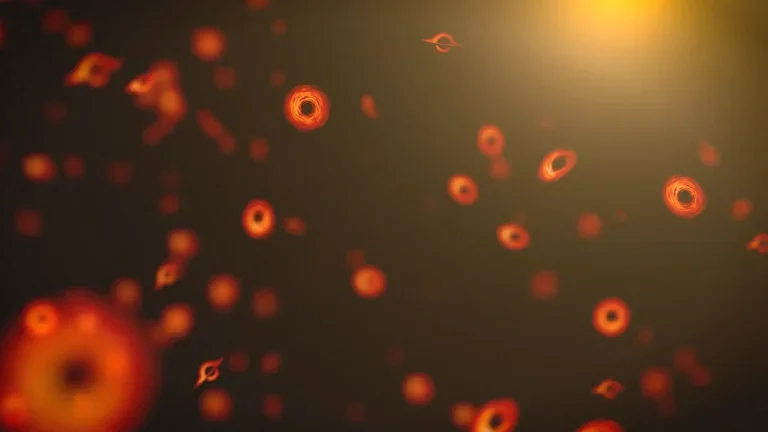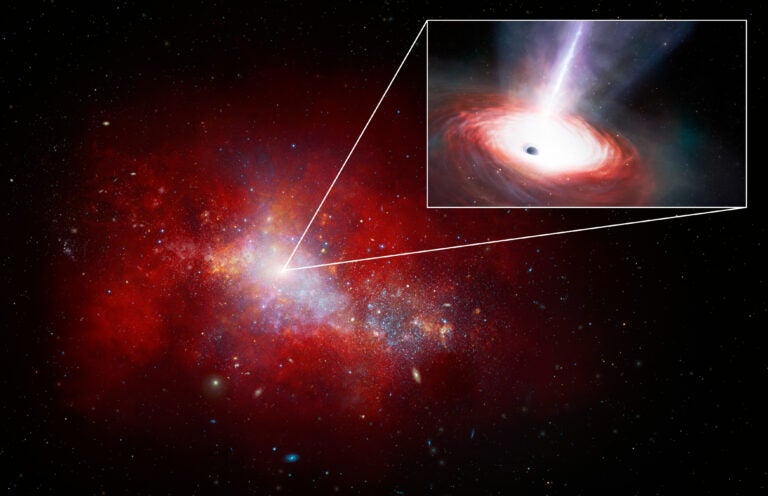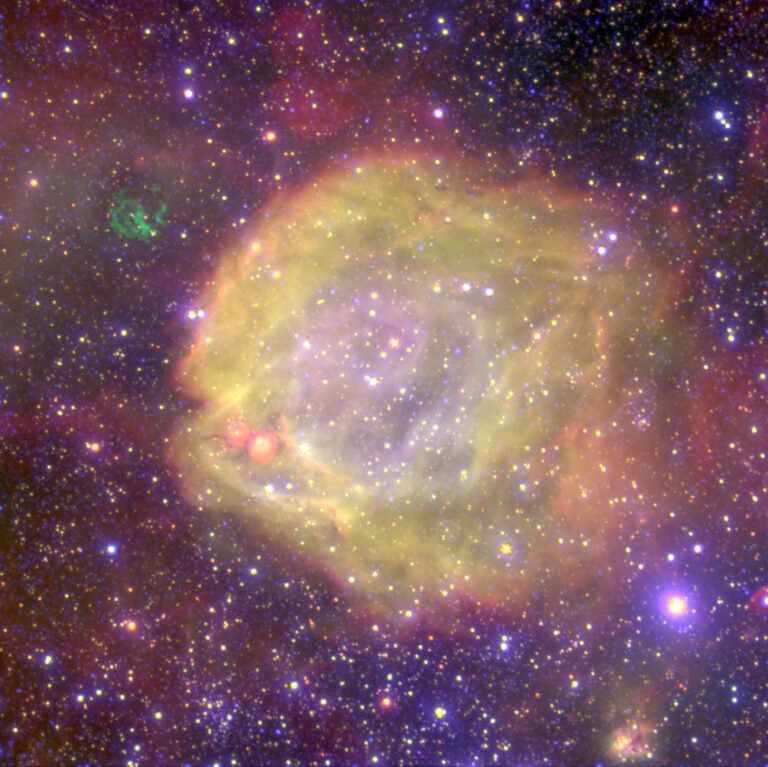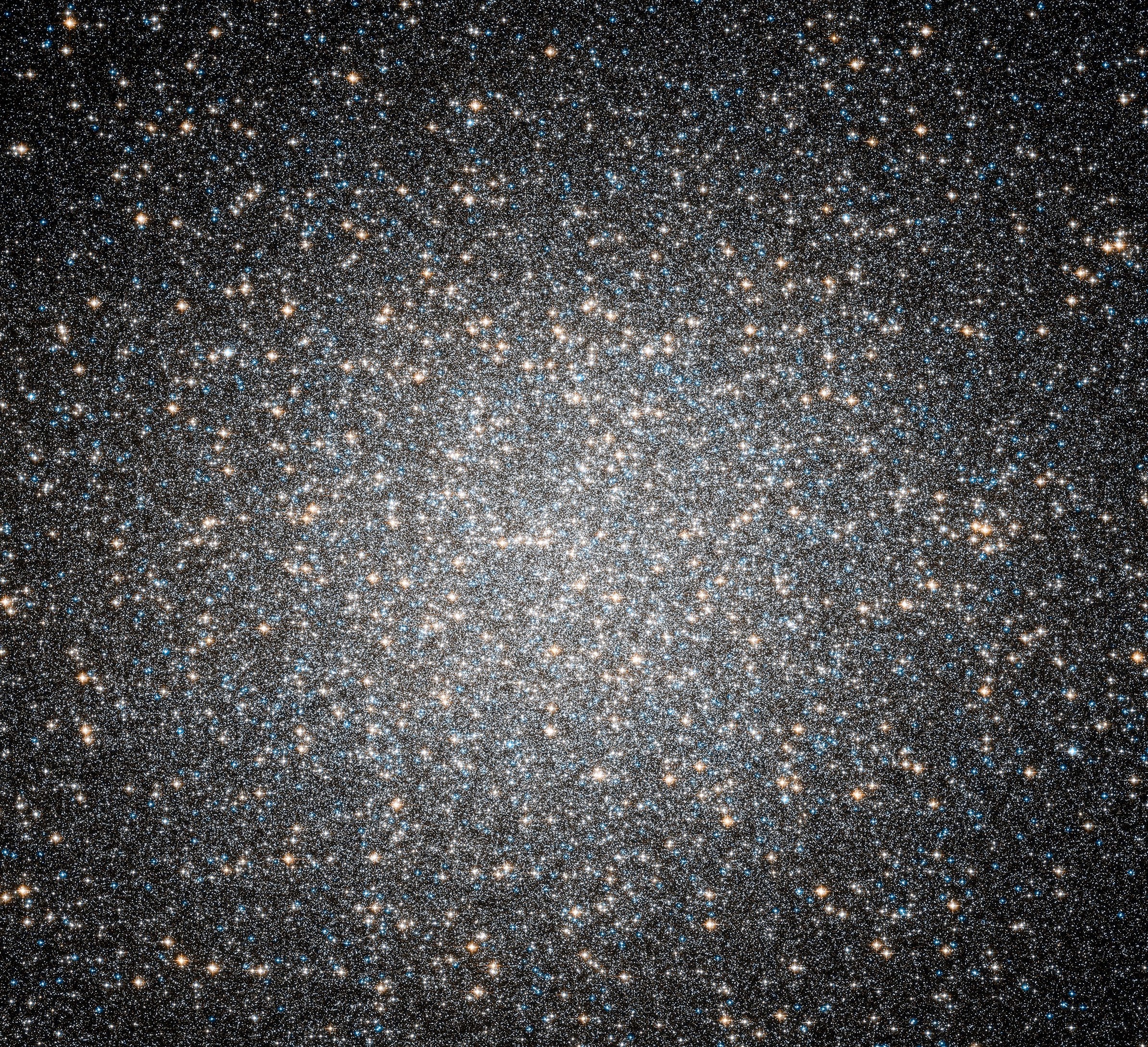
Black holes come in three weight classes: stellar-mass black, intermediate-mass black, and supermassive. While astronomers have definitively identified objects in the lightest and heaviest classes, the middleweight intermediate-mass black holes, or IMBHs, have remained elusive.
But evidence is piling up, including compelling new results from the Hubble Space Telescope (HST) spanning two decades, published July 10 in Nature. After following the motions of seven fast-moving stars in the innermost region of the massive globular cluster Omega Centauri, researchers believe their motions belie the presence of an IMBH some 8,200 times the mass of our Sun.
Special stars
The stars in question lie within the innermost 0.08 parsec (0.26 light-year; 1 parsec is 3.26 light-years) of Omega Centauri, a globular cluster visible from the Southern Hemisphere. Omega Cen contains some 10 million stars that together weigh as much as 4 million Suns, packed into a region of space some 150 light-years across. It’s also likely the victim of cosmic cannibalism — astronomers believe Omega Cen began its life as a dwarf galaxy that was ultimately consumed by the larger Milky Way.
Of Omega Cen’s 10 million stars, the velocities of some 1.4 million have been measured using HST data comprising hundreds of images taken over the course of 20 years. Within those images — many of which were meant to calibrate the telescope’s instruments, rather than produce real scientific results — study first author Maximilian Häberle of the Max Planck Institute for Astronomy in Germany and his team recently discovered seven stars “that should not be there,” he said in a press release.
“They are moving so fast that they would escape the cluster and never come back,” within about 1,000 years — a very short timescale, cosmically speaking — he said. But their presence and motions indicate they are orbiting the center of the cluster, rather than traveling on paths that will fling them away. And the most likely reason for that “is that a very massive object is gravitationally pulling on these stars and keeping them close to the center,” Häberle said.
How massive? At least 8,200 solar masses. And the only known cosmic object that can be is an IMBH.
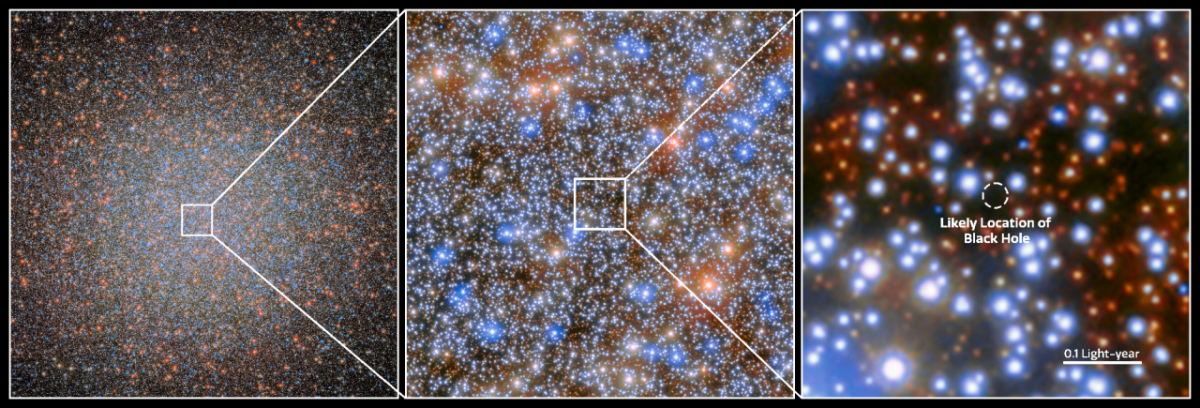
Seeing the unseen
Although previous studies had hinted that Omega Cen might host an IMBH, the discovery of these fast-moving stars offers firmer evidence than other work. “This discovery is the most direct evidence so far of an IMBH in Omega Centauri,” said study co-author Nadine Neumayer, also at the Max Planck Institute.
The study recalls the groundbreaking work led by 2020 Nobel Laureates Andrea Ghez and Reinhard Genzel, who very precisely followed the motions of stars called S-stars in the Milky Way’s center to show they were looping around a massive, compact, invisible object: Sagittarius A*, our galaxy’s 4.3-million-solar-mass supermassive black hole.
This new study is only the second time that the motions of stars in the center of an object (in this case, a globular cluster rather than our home galaxy) indicate the presence of an unseen, massive body locking them in place. Such work is incredibly tricky in the crowded regions at the center of a cluster or galaxy, where stars can be so close together that it takes painstaking observations made with high-precision instruments to tell them apart and follow their individual motions.
Cosmic steppingstones
Studying IMBHs may help bridge the gap between stellar-mass black holes, which are born from the deaths of single stars and weigh up to about 100 solar masses, and supermassive black holes, which are millions to billions of times the Sun’s mass and reside at the centers of all large galaxies. Despite their ubiquity, astronomers don’t know yet how supermassive black holes form, and IMBHs could provide the missing link.
That’s why observationally confirming an IMBH would be so groundbreaking. Omega Cen remains one of only a few such candidates known to date. And at a distance of 17,710 light-years, Omega Cen is closer to Earth than even the Milky Way’s supermassive black hole, some 26,000 light-years away in the galaxy’s center. “The black hole in Omega Centauri may be the best example of an IMBH in our cosmic neighborhood,” Neumayer said.
The team now has plans to better characterize their IMBH candidate through additional observations of the seven stars, including with the James Webb Space Telescope, on which they have already been granted time. They hope to better measure the black hole’s mass — 8,200 solar masses is a lower limit, not a precise value — and position, which should further clinch the case for an IMBH in the Milky Way’s most massive and most famous globular cluster.






